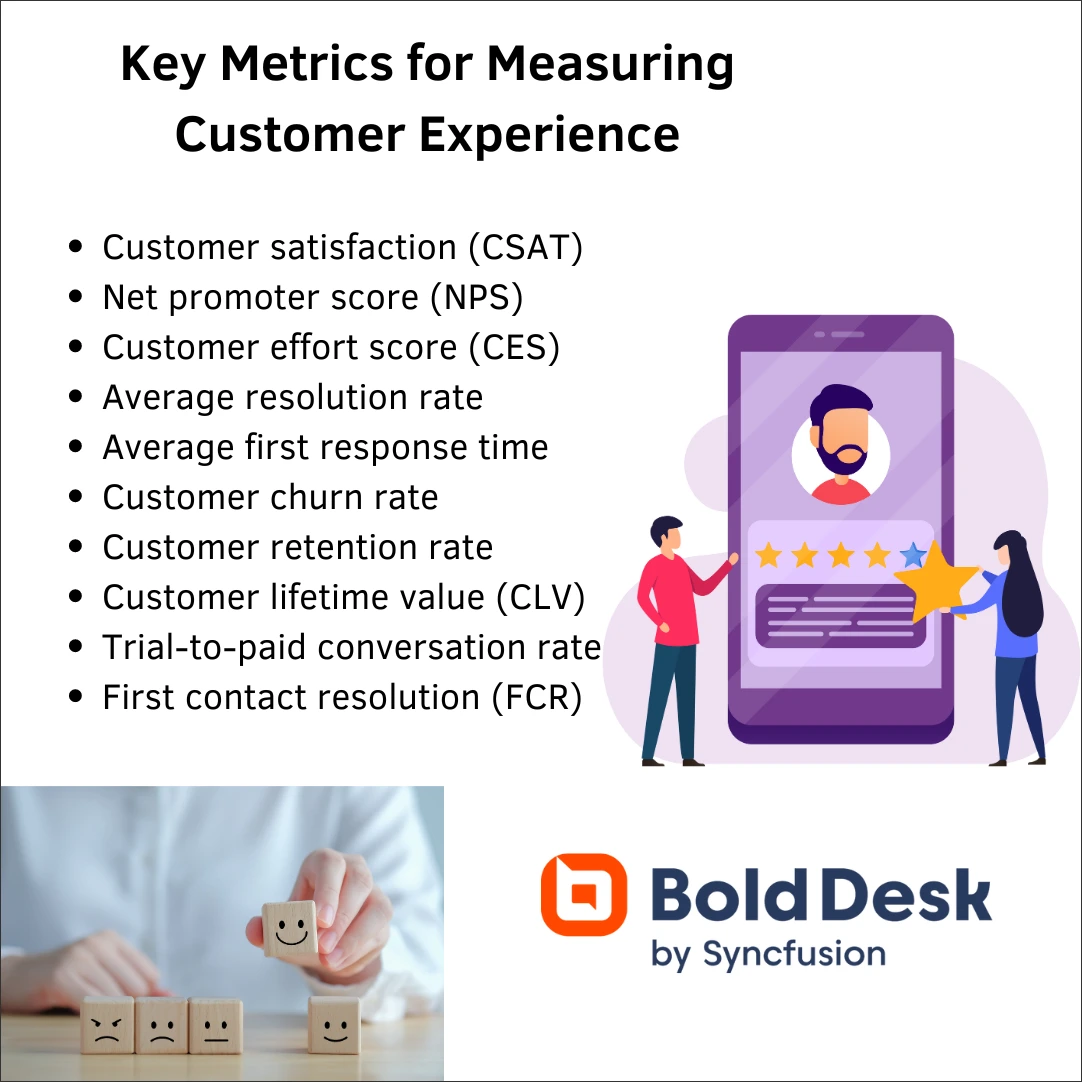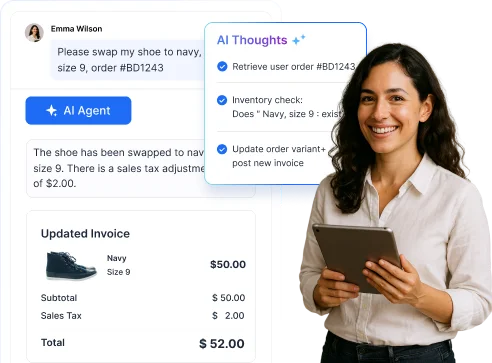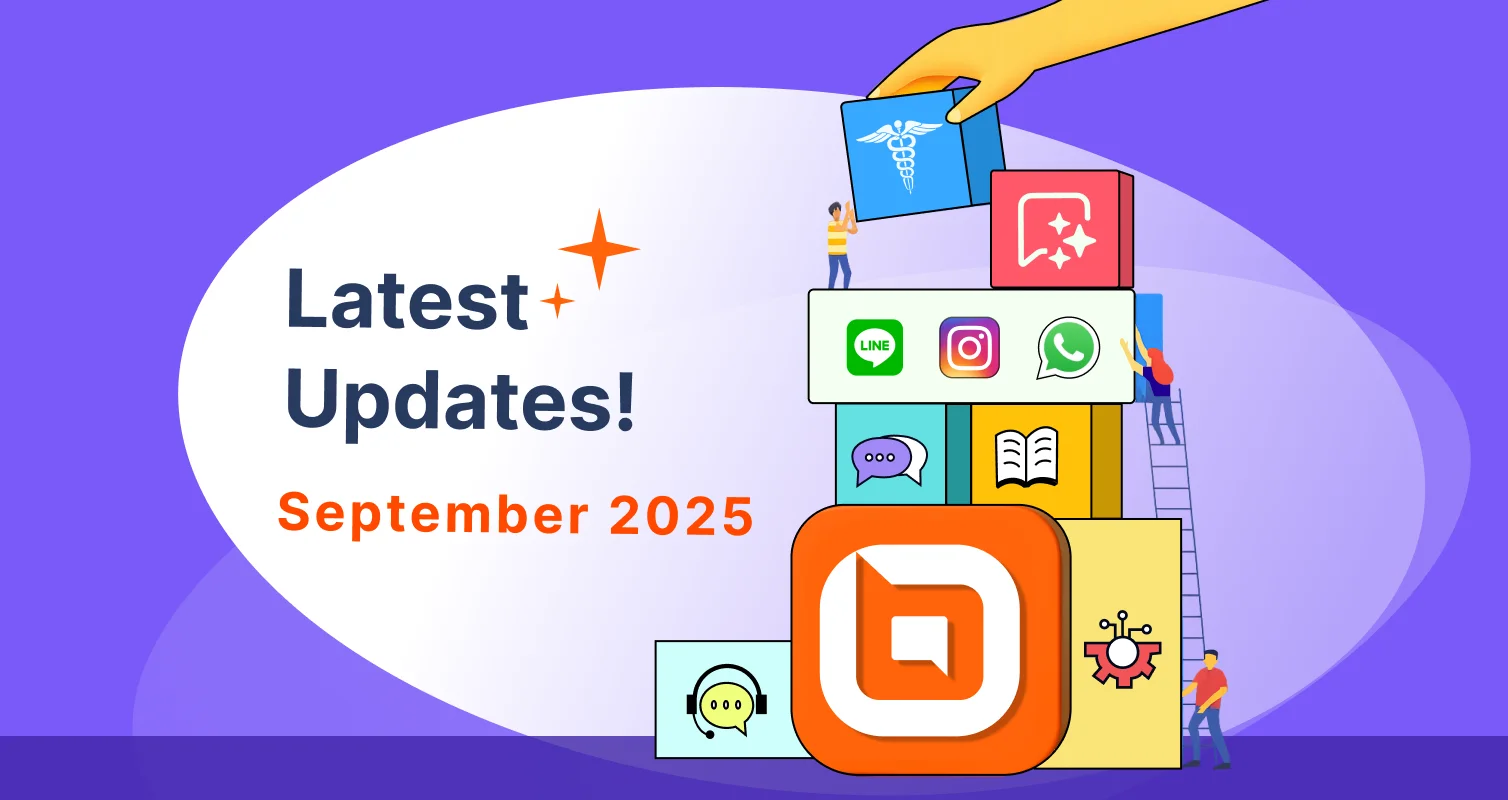Providing a quality customer experience is a key goal of every business.
Propel reports that 54% of consumers would discontinue using a brand following a single negative experience.
Customer experience metrics make it easy for you to track and assess the experience of clients.
In addition, these metrics help to identify effective strategies to provide a positive experience.
In this blog, I will take you through the best metrics to apply in your business to improve customer experience.
Related articles
- What is Customer Service Experience? Definition, Tips, and Examples
- Customer Service vs Customer Experience: Key Differences
- How to Create Customer Experience Strategy
- Customer Experience Analytics: Important KPIs and Use Cases
- 9 Effective Customer Experience Optimization Strategies
- 7 Best Ways to Utilize AI for Customer Experience
What are customer experience metrics?
Customer experience metrics are quantitative measurements taken from clients that provide insight into their experiences with the business.
Measuring customer experience is essential for businesses to understand how well they meet their customers’ needs and expectations.
It involves collecting and analyzing data from various touchpoints to gain insights into the customer’s journey and their overall satisfaction with the brand.
These numbers may change over time and at each stage of the operations in business.
Key metrics for measuring customer experience
You can track different aspects of the customer experience by use of different metrics. Here are some of the best customer experience KPIs you can use in your business.

1. Customer satisfaction (CSAT)
Customer satisfaction (CSAT) is an aggregate measure of how satisfied customers are with a product or service.
Most customer experience score responses are based on a rating scale of 1 to 5. 1 indicates a very dissatisfied client, and 5 indicates a very satisfied client.
Here is a typical example of a formula that you can use to calculate a CSAT score as a percentage.

In this sample formula, 4s and 5s are positive responses.
2. Net promoter score (NPS)
The net promoter score (NPS) gauges whether or not your clients will recommend your products and services to others.
In addition, NPS measures customer happiness, loyalty, and trust. You can determine it by asking customers if they would recommend your company to others.
Use the following formulas to know your NPS. They are based on a scale of 1 to 10, in which 10 is very likely to recommend the company, and 1 is unlikely to recommend it.



3. Customer effort score (CES)
The CES is one of the key customer experience metrics that tracks the effort users put into using your product or service.
CES reveals whether clients find it easy, average, or very hard to engage with your business to solve problems, get answers to questions, and more.
A standard scale for CES measurement is 1 to 7. 1 indicates that the end user considers working with the company very hard.
In contrast, 7 indicates that the customer finds working with the company to be easy. Take advantage of the following formula to determine your CES:

4. Average resolution rate
This customer experience index tracks the accountable time it takes for a ticket to be resolved. With it, you can see how long customers are waiting for their issues to be resolved.
Similarly, it helps you gauge how good your support team is at solving customer issues.
By examining this metric over time, you can see whether your average resolution time is trending longer or shorter.
Ideally, it should be about the same or shorter, because customers greatly value quick answers. When resolution of issues is fast, it improves customer experience improves.
5. Average first response time
This is one of the top customer experience metrics that tracks the average time elapsed between ticket creation and the first response from the support team.
Customers don’t like it when they are left unattended. This leaves them unsure of whether anyone noticed their issue or not.
Maybe it disappeared into an electronic abyss, never to be seen again?
Therefore, you need to check on your customers’ tickets and should send the first response as soon as possible. This relaxes clients because they feel noticed and taken care of.
By monitoring this customer experience index and keeping it low, you can ensure the clients’ experiences are good from the start.
6. Customer churn rate
Customer churn rate is another one of the significant customer experience metrics for businesses, particularly those in subscription-based models or those with other recurring revenue streams. I
t’s the percentage of customers who discontinue using a business’s products or services over a specified time period.
Understanding and managing customer churn is essential for maintaining and growing a customer base, ensuring sustainable revenue, and enhancing overall business health.
The churn rate is calculated by dividing the number of customers lost in a timeframe by the total number of customers at the beginning of the timeframe, then multiplying by 100 to express it as a percentage.

7. Customer retention rate
The customer retention rate is among the main customer experience metrics that measures the ability of a business to keep its customers over time.
High retention rates indicate customer satisfaction, loyalty, and the effectiveness of a company’s customer service and engagement strategies.
Retaining existing customers or users is often more cost-effective than acquiring new ones, making a good customer retention rate vital for sustainable business growth and long-term success.

8. Customer lifetime value (CLV)
Customer lifetime value is a customer experience index that estimates the total revenue a company can expect from a single client account throughout the duration of their relationship.
It considers not just the immediate value of a transaction, but the entirety of potential future purchases, subscriptions, or recurring revenue generated by that customer.
Understanding CLV helps companies make informed decisions about customer retention strategies, acquisition, and resource allocation to maximize profitability. Following is the formula to determine CLV.

9. Trial-to-paid conversation rate
The trial-to-paid conversion rate measures the percentage of users who convert from a free trial to a paid subscription or purchase.
This customer experience index is for businesses that offer free trials as part of their sales strategy, such as software-as-a-service (SaaS) companies.
A high conversion rate indicates that the trial experience is effectively demonstrating the value of the product, leading to successful sales.

10. First contact resolution (FCR)
First contact resolution is a customer experience index that measures the percentage of customer tickets resolved with just one interaction with a customer service representative.
These are customers that do not require a follow up or escalation on the issue presented. High FCR rates are a sign of efficient and effective customer service, which boosts customer satisfaction.
The FCR rate can be calculated using the following formula.

Importance of tracking CX metrics
Tracking customer experience KPIs are essential because of the following reasons.
![]()
Increases your productivity
Customer experience metrics mutually benefit you and your customers. By tracking customer experience metrics such as CSAT, you can synthesize the advice you get from customers and use that to improve your help desk.
In turn, your customers get a quality product and service, while you earn more business from their satisfaction and recommendations.
Encourages open-mindedness in solving customer issues
Tracking your customers’ experience gives you a reason to think outside of the box.
For instance, when you track an overdue task, you will have thoughts beyond the standard support process on how to resolve the issue faster so that you can retain the customer.
Innovative approaches used for one task may be applicable to others. This encourages you to stay open-minded about the best ways to deliver an excellent customer experience.
Helps develop essential customer service skills
Insights from customer experience metrics help your support agents develop customer service skills since they deal with all kinds of customers.
Polishing customer service skills for both enraged and happy customers makes your help desk a well-rounded one.
This, therefore, increases your chances of expanding your business and recruiting new customers.
Enables you to set customer experience goals
Not all customers are the same. Each client has a unique perspective on their problem and your product.
Understanding these viewpoints gives you a better insight of how your intended customer experience may change in practice.
Therefore, tracking their experiences with your service lets you know which ones were never satisfied.
You can reach out to these cases to find out what was wrong and correct it for other customers.
From such personal experiences, you can set goals for delivering satisfying customer experiences equally.
Tracking customer experience metrics for business growth
In summary, customer experience metrics play a large part in improving your business.
Tracking them and working to improve them to optimal levels makes your customers’ experience eminent.
To improve your client’s experience, consider using a help desk platform like BoldDesk to give your support team a powerful, seamless tool for tracking and addressing customer concerns.
Arrange for a live demo to discover how BoldDesk can enhance your company’s performance and monitor key customer experience metrics. Begin a free trial to delve into its numerous functionalities.
Contact the BoldDesk support team if you have any questions.
Your insights help us improve and shape better customer experiences. What metrics matter most to you? What challenges have you faced in measuring CX? Share your thoughts in the comments or reach out—we’re listening!
Frequently asked questions
The most widely used CX metrics include:
- Customer Satisfaction Score (CSAT)
- Net Promoter Score (NPS)
- Customer Effort Score (CES)
- First Response Time
- Customer Churn Rate



















 Email Ticketing System
Email Ticketing System Shared Inbox Software
Shared Inbox Software Multi Brand Help Desk
Multi Brand Help Desk Internal Help Desk Software
Internal Help Desk Software Trouble Ticketing Software
Trouble Ticketing Software Mobile Help Desk
Mobile Help Desk 













![Top Zendesk Features to Know in 2025 [+ Pros and Cons]](https://storage.googleapis.com/cdn-website-bolddesk/2025/08/5d3c51a5-zendesk-features.webp)



